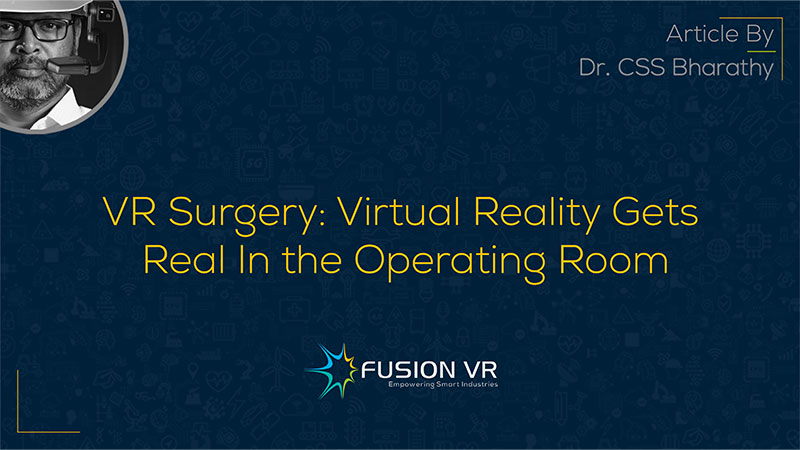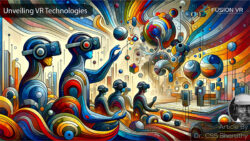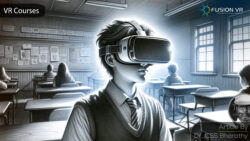Since the COVID-19 pandemic, many of us have found various digital tools and resources to help us get our work done. The restrictions on physical contact and social distancing to keep people safe have led to the adoption of technologies that were considered unnecessary or expensive in pre-covid times. Virtual Reality has been quietly making an impact and gaining more fans even before the coronavirus struck.
It has made forays in hospitals and medical colleges, too, because of the inherent advantages that it has. The immersiveness of Virtual Reality has led to the development of several use cases that have benefited many professionals in the medical fraternity.
One of the most exciting and impactful uses of virtual reality is in the field of surgery. Doctors and hospital administrators have always focused their energies on how to enhance positive patient outcomes and the overall patient experience.
Patients are interested in the procedures that would be performed by the surgical team on them. They wish to be made aware of how the surgery would be and the potential risks. As we all know how important seeing is to believe, the visual experience matters a lot, and this is where virtual reality packs a punch.
Now Virtual Reality may mean different things to different people, but allow me to explain that and get it out of the way. Virtual reality is a three-dimensional digital environment that allows people to immerse themselves, navigate and obtain experiences. Such experiences can be designed and created to fulfil the requirements of the individuals or institutions using them. These virtual environments can be at the macroscopic or microscopic level.
One only needs a VR headset that will cover your eyes and launch you into the virtual world, and trick you into believing that you are actually there. The headset may be standalone or tethered to a computer. Such is the magic and power of virtual reality, and it has been seen to be believed.
Benefits of Virtual Reality in Patient Education and Decision Making
The 3D VR environment is developed through the collaborative efforts of VR engineers, solution architects, physicians, surgeons, nurses and other healthcare professionals. It is quite important that this collaboration happens as it enables the development and implementation of a comprehensive and effective VR surgery solution for the medical team using it.
Let us look at how virtual reality surgery is being used across the world. Knowing that these are possibilities inspires people to implement at their facilities. Stanford Medicine is the medical school at Stanford University in California, USA that has implemented virtual reality on their campus. They are using virtual reality software that uses imaging from MRI (Magnetic Resonance Imaging), angiograms and CT scans to develop virtual reality 3D models of specific areas of the patient’s body.
It has helped patients to view exactly how the affected body part looks like and obtain a simulated and guided walkthrough on its actual condition and how the surgery would be performed. This gives them immense confidence and the opportunity to ask surgeons any questions they may have. They no longer need to blindly trust the doctor and just rely on hope. They can obtain detailed information and make informed decisions on their health outcomes.
Stanford University has established a state of the art facility with all the necessary virtual reality hardware to train surgeons and the support staff and also plan surgeries that have been scheduled. They use VR headsets and take a guided journey into the brain of the patient to be operated on. Since this imagery is based on scans of the patient, they know what to fully expect and do. The surgical team is now able to look closely and at various angles of the affected part.
This experience becomes virtual reality surgery training and rehearsal for the team and also enables them to conduct what-ifs when things do not progress as planned. It is particularly useful for young doctors and residents in the surgical field to learn from experienced surgeons. This type of virtual reality surgery training has also led patients to choose this university medical school for their surgeries as it is patient friendly. This as you can easily see is a true win-win approach for both patients and the hospital.
Encouraging the Adoption of VR in Surgical Practice and Training
Training to be a surgeon takes time and becoming highly skilled requires multiple opportunities and lots of practice. In reality, this is not always the case. Not all surgeons get the opportunities and the ability to share their expertise with others is limited.
This is more acute for medical students who need to learn basic surgical skills at medical school. Their only option is gain practice on cadavers, which are not only expensive but also present logical challenges.
Considering the cohort size of medical schools, it may result with a group of students watching while only one is doing it. The rest have to take that learning and hopefully apply it effectively when they have the opportunity to perform on a real patient.
This type of approach presents a significant risk to positive patient outcomes and imposes malpractice risks to doctors should there be errors. Virtual reality technology provides a great way to remedy this. Students can obtain unlimited training on VR models and obtain the knowledge and practice on any number of procedures.
The human anatomy is presented in highly realistic 3D models and students get the experience of being highly immersed inside any part of the human anatomy. The organs can be viewed from many angles and the interiors can be presented in x-ray and sectional views. Procedures can be presented with an expert surgeon as the guide and students can be evaluated until they develop the required level of confidence and expertise. Here with this development, we are taking virtual reality in the operating room and realizing immense benefits.
This approach is also hygienic as the risk of infection from cadavers is eliminated. This is even more important in the COVID affected world as the simulated setting eliminates large congregations of students and the risk of viral transmission. Such training allows live supervision and feedback. Precise feedback can be provided as the VR exercise can be recorded and reviewed in detail later on.
The rise and use of VR-guided surgery in the operating room are tremendous and immensely beneficial for the future. What I have attempted to share here is just a sample of the power and applications of VR in the surgical field. The concept of virtual reality in surgery goes more than 30 years ago when universities and the department of defense in the US identified its potential.
Today, the technology has matured a lot and has become more affordable. VR has moved on to many fields after establishing its popularity in the gaming industry. I really want to encourage hospitals and medical colleges across the country to embrace VR in surgical practice and training.
The country expects and deserves high-quality medical care which can be delivered with the aid of VR technologies. As adoption increases and positive patient outcomes are shared, the costs will come down and vr will be a standard feature in all future surgical preparations. You as much as I will be looking forward to that day!





